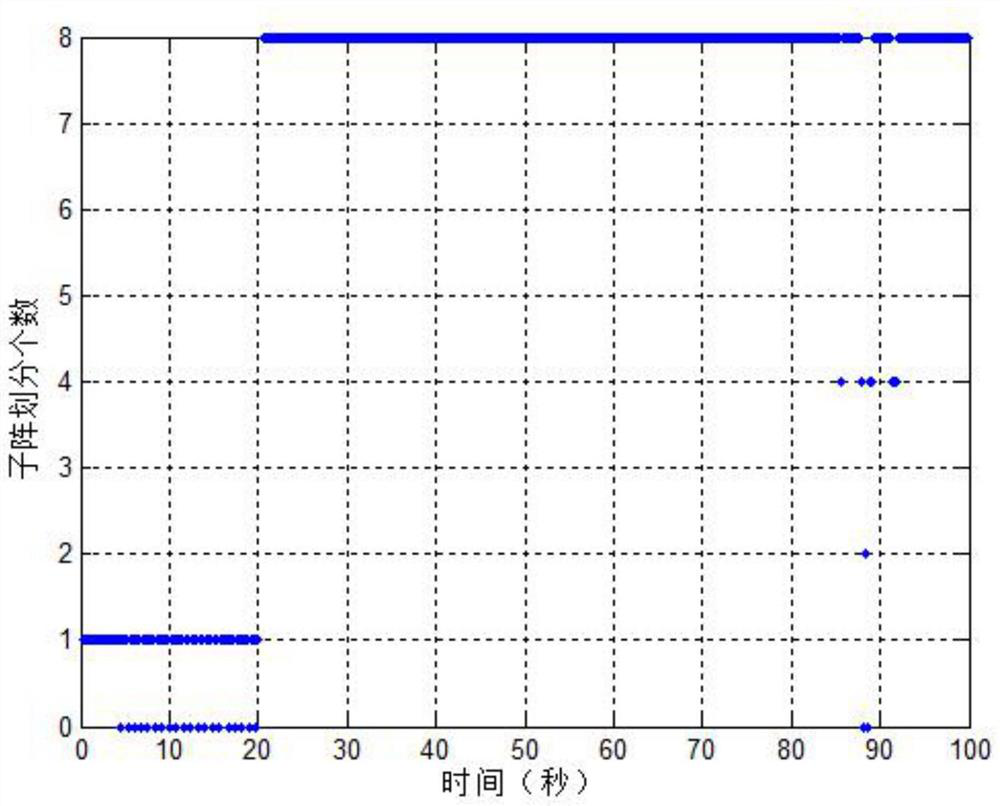CMIMO real-time radar resource management method with adaptive beam number and width
An adaptive beam and resource management technology, applied in the field of CMIMO real-time radar resource management strategy, can solve the problems of inability to use simultaneous multi-beam MIMO radar, not considering the expected tracking accuracy, and ignoring the real-time requirements of resource management.
- Summary
- Abstract
- Description
- Claims
- Application Information
AI Technical Summary
Problems solved by technology
Method used
Image
Examples
Embodiment Construction
[0076] Consider a linear array co-located MIMO radar with a half-wavelength distance between adjacent elements. The number of array elements is M=2048, and the operating frequency is 10GHz. P fa =10 -6 , Pd th =0.95.
[0077] There are a total of 8 targets in the simulation scene, target 1 exists from the beginning, while the remaining 7 targets appear at 20s. Assuming that both are Swerling I-type targets and have an average of 1m 2 the RCS. The expected tracking accuracy of each target is described by the corresponding position tracking error variance, where the expected tracking accuracy of target 1 is 60m 2 , the expected tracking accuracy of target 2 is 100m 2 , the expected tracking accuracy of the remaining targets is 140m 2 . which is There are a total of 17 energies available for tracking in the selectable set of waveforms {1.35, 2.25, 4.05, 5.85, 11.7, 23.4, 25, 28, 32, 36, 40, 44, 48, 52, 56, 62}J, while using The energy for the search is 2J. The eight ...
PUM
 Login to View More
Login to View More Abstract
Description
Claims
Application Information
 Login to View More
Login to View More - Generate Ideas
- Intellectual Property
- Life Sciences
- Materials
- Tech Scout
- Unparalleled Data Quality
- Higher Quality Content
- 60% Fewer Hallucinations
Browse by: Latest US Patents, China's latest patents, Technical Efficacy Thesaurus, Application Domain, Technology Topic, Popular Technical Reports.
© 2025 PatSnap. All rights reserved.Legal|Privacy policy|Modern Slavery Act Transparency Statement|Sitemap|About US| Contact US: help@patsnap.com



